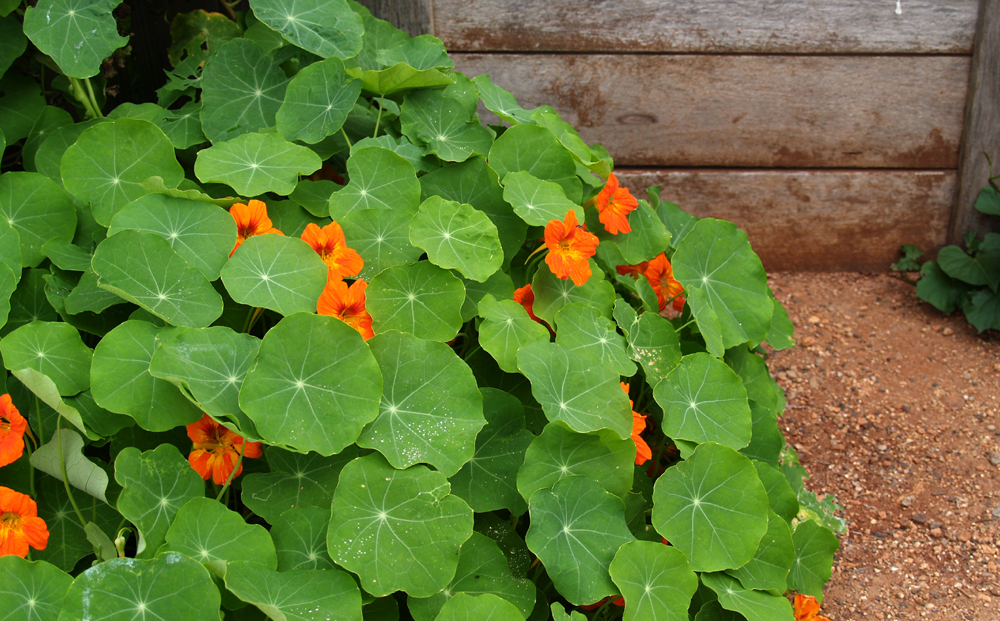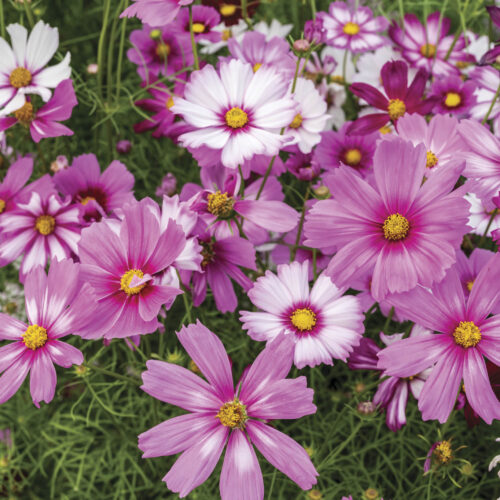A Nod to Nasturtiums
2012-04-25T22:44:27+10:00
One of the best plants for organic gardens is the nasturtium. JUSTIN RUSSELL writes that it's useful, ornamental, and lots of fun to grow.
The party will soon be over for my nasturtiums. I have a row of them along one side of the vegie patch that self seed every year and get really excited in March, romping over the adjacent path and scrambling up the picket fence. Within the next few weeks, the first frost of winter will play wowser, leaving a smelly mess of blackened foliage along with some seeds to germinate and repeat the show next autumn.
Permaculturists have long sung their praises, but in case you hadn’t realised, nasturtiums (Tropaeolum majus) are handy plants to have in an organic garden. They’re among the true all rounders, proving useful and attractive in equal measure. All parts of the plant are edible. The unripe seeds can be soaked in vinegar and used as a substitute for capers, and the flowers make a decorative garnish on salads. My father-in-law, who isn’t a salad fan at the best of times, can’t see the point in eating a flower, but that hasn’t stopped me from trying. For those of you who like a little pepper in your salad greens, try nasturtium leaves. They have a delicious, rocket-like pungency.
This peppery flavour indicates the presence of mustard compounds in the leaves, making nasturtiums excellent companion plants. When planted in close proximity to sensitive crops, they will repel pests such as cabbage white butterflies, mites and aphids. In turn the flowers are highly attractive to beneficials such as hoverflies and pollinating bees. Sunshine Coast herb guru Isabell Shipard even claims that nasturtium roots secrete an essence into the soil that is taken up by neighbouring plants, helping them to resist pests and disease.
But wait, there’s more. Nasturtiums form an outstanding living mulch, reducing weeds and maintaining soil moisture. And if you need further convincing, the leaves contain a chemical called tromalyt, which acts as a natural antibiotic in the body. Nasturtiums are one useful plant!
They’re also wonderfully ornamental. I love the old fashioned climbing types, which unlike the more demure bedding nasturtiums, ramble all over the place and brighten up the garden in a riot of orange flowers. Cottage gardeners have a soft spot for nasturtiums. If my hunch is correct that more and more people will return to a traditional cottagers lifestyle in coming years, nasturtiums will again be a plant grown almost everywhere, by nearly everyone. What a happy place the world would be if it was covered in partying nasturtiums!






